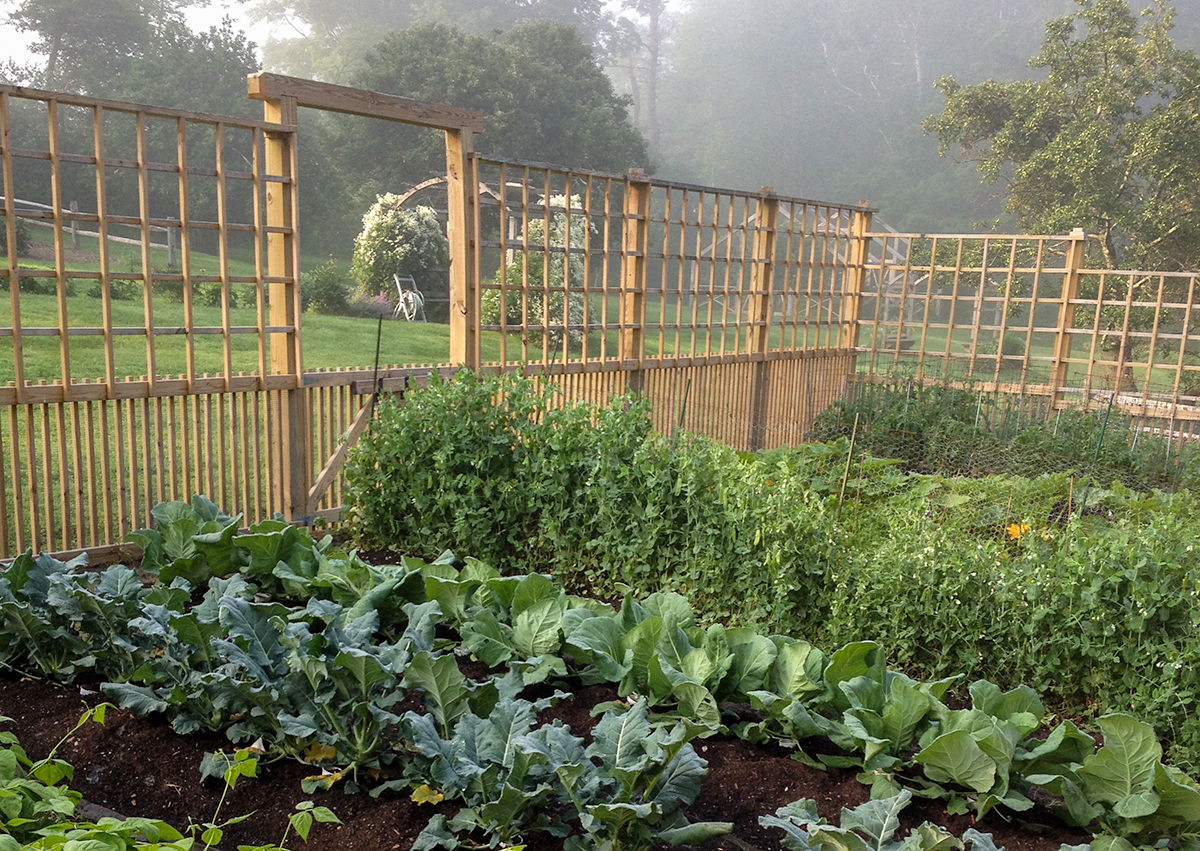Cutting and Kitchen Gardens
While the formal garden is surrounded by spectacular mountain views, the family also enjoyed the gardens located down the terraced hillside and behind the carriage barn for recreation and relaxation.
Records and historical photos indicate that the Cutting and Kitchen Gardens behind the Lincolns’ carriage barn, now the Welcome Center and The Museum Store, supplied the family with a full range of vegetables, berries and fruit. The Plant A Row vegetable, butterfly, cutting, observation gardens and soft fruit cage are located here, as well as a cold compost bin. For more than a decade garden volunteers have grown hundreds of pounds of vegetables annually for the local food cupboard in the Plant A Row vegetable garden.
The cold compost bin located just behind the garden is used for vegetables and other easily broken down food scraps and garden debris.
Also located in this area is the Cutting Garden, a source for a supply of fresh flowers for use by the renowned “Hildene Flower Ladies.” These volunteers use fresh flowers from the garden, as well as their own, to create arrangements weekly that are placed throughout the Lincoln home and Welcome Center, bringing the outside gardens’ beauty inside.
A Butterfly Garden at Hildene
Located in the Kitchen and Cutting Garden behind the Welcome Center the Butterfly Garden is designed to attract different species of butterflies and thus contains a variety of nectar plants, food for adult butterflies, and host plants, food for caterpillars. Most caterpillars depend on specific plants. This garden has milkweed for Monarchs, dill for Eastern Black Swallowtails, and mallow for Painted Ladies. By having both nectar and host plants there is the opportunity to observe the complete life cycle of butterflies. A variety of nectar plants, blooming at different times, is planted in order to have continuous blooms throughout the season. There are also sunning spots for basking, puddling areas, and shrubs and bushy flowering plants for shade and shelter. Most of the plants have the added benefit of being attractive to a wide variety of bees as well.
Hildene Horticulturist, Andrea Luchini refers to the garden as a “purposeful mess” noting that, “Pollinators and other beneficial insects need leaf debris for shelter and for the little rain puddles.
This garden is also a key element of one of our popular fall school programs, Mighty Monarchs. Children in grades K-3 participate in this program which explores the habitat, life cycle and migration of Monarch butterflies. The garden is also an educational resource for our summer camp programs, especially during Bug Bonanza camp.
The Soft Fruit Cage is a prime spot for pollinator enhancement. To encourage them to be there all season long, flowers that bloom in different times all during the season must be planted and others often seen as undesirable, for example the dandelions in the side bed, need to stay. Hildene guests can now find currants, blueberries, gooseberries, raspberries, and strawberries for tasting in addition to a cherry tree and grape trellis in the cage.
Across the property we have also created pollinator meadows and pathways and dandelion lawns to provide more habitat for all of our native pollinators.
